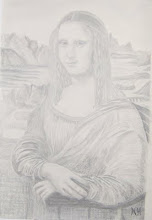This is possible because in Einstein’s relativity every object has its own reference frame when the object moves spacetime moves relative to the energy, mass and momentum of the object. Therefore every object is always in the centre of their own created ref-frame.
Just by walking across the room you will slightly alter your own experience of time and space and in doing so you will create your own future relative to your actions or energy, mass and momentum, forming your own arrow of time within your own created ref-frame.
Because this process is universal conscious energy in the form electrical activity in the brain is the most advanced part of this universal process. The continuous flow of ideas and emotions that form consciousness are always in ‘the moment of now’ within their own created ref-frame. It is this process of each one of us having our own individual ref-frame that gives the brain the concept of mind with each one of us having our own unique view on life.
Therefore we have the individuality for some people to feel lucky and others to feel unlucky and believe in sod’s law that "anything that can go wrong, will"
Gravity is not a real force in this theory it is more of an outcome or by-product of this dynamic process. Objects just free-fall towards the greatest energy or mass because it has the slowest rate of time therefore the greatest warping or curvature of spacetime.
In this theory the physics of quantum mechanics represents the physics of time as a physical process. The uncertainty of quantum mechanics (Heisenberg’s Uncertainty Principle ∆×∆p×≥h/4π) is the same uncertainty that we have with any future event within our own ref-frame. The quantum wave particle function Ψ or probability function that forms Heisenberg’s Uncertainty Principle represents the forward passage of time or Arrow of Time itself within an individual ref-frame.
We can see this in the difference between an experiment in classical physics and an experiment in quantum physics. All classical experiments are a process over a period of time and many of them are totally predicable. We can do the experiment as many times as we like the outcome will always be the same. This can be seen as a kind of Newtonian determinism that we have in classical physics. But even here there is uncertainty because there is always the possibility something will go wrong with the experiment (contamination or contact with an external ref-frame or force) giving us a totally different outcome.
Experiments in quantum physics are always uncertain because of the wave-particle duality of light. How the experiment is set up will determine the nature of the light. In this theory light is a wave over a period of time and a particle in the ‘moment of now’ (photon electron coupling) and this process form the flow of time itself.
Light will radiate out in every direction forming a sphere and because a sphere has the greatest symmetry or organisation it will have the lowest entropy for the continuous increase in entropy that we see in the second law of thermodynamics. Photon energy will cascade down forming greater degrees of freedom for statistical entropy!














No comments:
Post a Comment